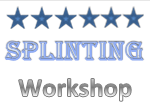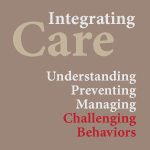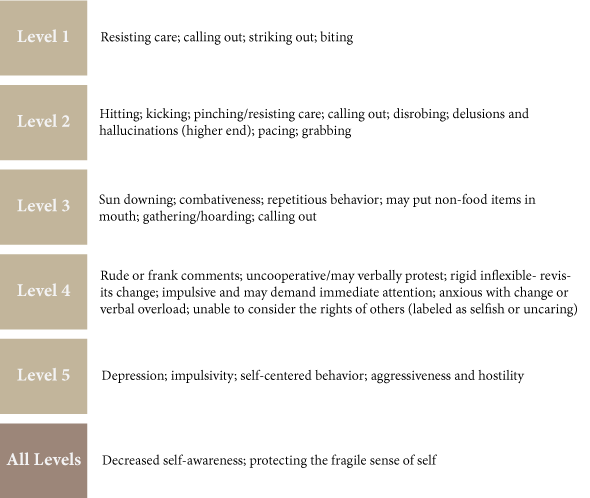
Date: Nov 17 and 18, 2012
Time: 8 AM – 5:30 PM each day
(1 hour lunch break)
:
University of North Texas
Allied Health Center
Fort Worth, TX
Ensign Facility Services hosts seminars in facilities that are ADA accessible. Please let Jon Anderson, jonanderson@ensigngroup.net know if you need any special accommodation.
Instructor:
‘Dee’ Virginia Ellis, PTA, CKTI
Dee is a Physical Therapist Assistant who has practiced in many different settings and states. Dee specializes in aquatic therapy, Pilates based spinal stabilization and orthopedic outpatient rehab. She has been a PTA for 15 years, graduating with her A.A.S. from Community Colleges of Southern Nevada in Las Vegas with a Gerontology Wellness Specialty. She also did undergraduate study at San Diego State University in California. Dee has a special interest in wellness and prevention.
Dee has been a Certified Kinesio® Taping Practitioner for 8 years and has been a Certified Kinesio® Taping Instructor since 2005. Dee has her American Physical Therapy Association (APTA) Advanced Proficiency in the musculoskeletal realm and was the recipient of the Texas Physical Therapy Association’s (TPTA) Joy Davenport award in 2008. She is an active volunteer in the APTA, the TPTA and the Aquatic Section of the APTA. Dee has presented continuing education on Electrical Modalities, Aquatic Physical Therapy and Kinesio® Taping: Fundamentals and Whole Body Techniques.
Dee currently works for as a PRN for local south Texas hospital systems and home health agencies.
Topic:
Kinesio Tape Course (KT1 and KT2)
KT1: Fundamental Concepts & Basic Muscle Applications (To be taken in conjunction with KTAI approved KT2 course)
The KT1 course is designed to introduce practitioners to the Kinesio Taping® Method. During this eight-hour class, the instructor will introduce Kinesio Taping® concepts, theory and history, and discuss the four major physiological effects; skin, muscle, circulatory/lymphatic, and joint. During lab sessions, attendees will have ample time to practice Assessment Tests approved for the enhancement of their Kinesio Taping® skills and muscle applications for both the upper and lower body. Upon completion of this course, attendees will be able to discuss and apply the Kinesio Taping® Method to relax overuse syndromes, stimulate weak muscles, and decrease pain and swelling.
KT2: Advanced Concepts & Corrective Techniques (To be taken in conjunction with KTAI approved KT1 course – prerequisite is completion of KT1 course)
The KT2 course builds on material learned in KT1. During this eight-hour class, the instructor will introduce the six Corrective Techniques (Mechanical, Functional, Space, Fascia, Ligament/Tendon, and Lymphatic) and discuss their application in a variety of clinical conditions. During lab sessions, attendees will have ample time to practice applying these techniques to a variety of upper and lower body conditions. Upon completion of this course, attendees will be able to discuss and apply the Kinesio Taping® Method to orthopedic and neurological conditions.
COURSE OBJECTIVES
Upon completion of this course, the participant will be able to:
- Describe the concepts of Kinesio Taping.
- Review muscular anatomy as it is related to Kinesio Taping.
- Explain and apply the concepts of the Kinesio Taping Method.
- Describe the unique qualities of the Kinesio Tex Tape.
- Recognize the principles of Kinesio Tex Tape application.
- Utilize and demonstrate application skills in guided laboratory sessions.
- Demonstrate application skills during lab sessions.
- Practice the various cutting techniques and their clinical application.
- Apply Kinesio Taping method to relax and stimulate muscles.
- Apply Kinesio Taping methods for pain, swelling, joint mobility and stability.
- Apply various taping techniques for treatment of the spine, and upper/ lower extremity dysfunction
- Apply various taping techniques for treatment of unique conditions using the concepts and principals of the Kinesio Taping Method.
Who Should Attend? PTs, OTs, ATs, DCs, LACs, MTs, PTAs, OTAs and other medical practitioners. THIS COURSE IS INTENDED FOR LICENSED HEALTH CARE PRACTITIONERS ONLY
CEUS:
You can submit 16 hours continuing education credits to TX Physical Therapy Association. The Kinesio Taping Association is an approved provider for AOTA (Provider # 4489). The assignment of AOTA CEU’s does not imply endorsement of specific course content, products, or clinical procedures by AOTA. The Kinesio Taping Association is recognized by the Board of Certification, Inc. (BOC) to offer continuing education for certified athletic trainers (provider # P2293). Kinesio Taping Association is approved by the National Certification Board for Therapeutic Massage and Bodywork (NCBTMB) as a Continuing Education Approved Provider (Provider #450030-06).
Cancellation/Refunds:
No refunds
Class Schedule:
KINESIO TAPING® AGENDA
Day 1 – Fundamental Kinesio Taping
| 7:30 |
Sign in |
| 8:00 |
Instructor Introduction and Bio |
| 8:10 – 10:00 |
Introduction to Kinesio Taping Concepts, Theory and History, Qualities of Kinesio Tape, Differences, Benefits and Finger Demonstration, introduction of Five Major Physiological Effects and Skin Function, Circulatory Function, KT Skin & Fascia Function, Iliocostalis Lumborum Demo Lab, KT Muscle Function and Basic App Concepts |
| 10:00 |
Break |
| 10:15-11:30 |
Joint Function; Biotensegrity; Application Basics, Directional Lab – Upper Trapezius, Challenges, Contraindications & Precautions, Intro to KT Assessment Tests |
| 11:50 |
Q&A |
| 12:00 |
Lunch |
| 1:00-3:00 |
KT Cervical Flexion Assessmet, Longissimus Cervicis (Cervical Paraspinals) Application Lab, KT Cervical Extension Assessment, Scalenus Anterior Lab, KT Trunk Flexion Assessment, Rectus Abdominis App Lab, KT Pectoral Girdle Assessment, Pectoralis Major and Rhomboid Major Lab, |
| 3:00 |
Break |
| 3:15 – 4:30 |
KT Hip Rotation Assessment with Lab, Gluteus Medius App Lab, KT Leg Raise Assessment with Lab, Quadriceps Femoris App Lab, Review Five Major Physiological Systems, App Concepts, Assessment Questions, Extensor Digitorum Lab, Hamstrings Lab |
| 4:30-5:30 |
Assessment Q&A; KT1 Review & Q&A, Application Requests; Conclusion |
Day 2- Advanced Kinesio Taping
| 8:00 – 10:05 |
Overnight Responses, Troubleshooting, Assessment Questions, & KT1 Review, Basic Concepts of Corrective Techniques, Tension guidelines, & Precautions., Mechanical Correction, Y Technique with tension in the Tails and base, Mechanical Correction, I Technique, Mechanical Correction Lab: Patellar Tracking, Mechanical Correction, Shoulder Instability, Mechanical Correction Lab: Shoulder Instability |
| 10:05 |
Break |
| 10:20 – 11:30 |
Introduction to Fascia Correction, Fascial Oscillation and Gliding. “Y” Tension in Tails, Tension in Base, Rams Head., Fascia Correction, Y Technique with tension on the tails. Manual Fascial Glide Correction With Tension through the tails., Fascia Correction Lab, Fascia Correction, Y Technique with tension through the base. Manual Fascia Winding Correction Technique with tension in base., Fascia Correction Lab, “Y” Strip: Tension on Tails, Rams Head App, Fascia Correction Lab |
| 11:30 |
Lunch |
| 12:30 – 3:10 |
Introduction To Space Correciton. Space Correction “I” Technique, Space Correction “Donut Hole” App. Space Correction Lab, Space Correction “Star” App. Space Correction “Button Hole & I Strip” App. Space Correction Lab, Space Correction “Web” App and Lab, Introduction To Ligament/Tendon Correction, Ligament Correction, Tendon Correction “I” & “Y” Techniques, Ligament & Tendon Correction Lab |
| 3:10 |
Break |
| 3:25 – 5:15 |
Tendon Correcton with Plantar Fasciitis App, Tendon Correction With Plantar Fasciitis Lab, Introduction to Functional Correction, Function Correcton Technique, Functional Correction Lab, Introduction To Circulatory / Lymphatic Correction, Circulatory / Lymphatic Correction “Fan” Technique Lab, KT Clinical App Finger, Documentation, Billing, Precautions, Contraindications and Rules, Assessment Questions, Glossary Review, Application Requests and Q&A |
| 5:10 – 5:30 |
Assessment Questions, Glossary Review, Application Requests; Q&A; Conclusion |
$569 for licensed professionals
$369 for students (limited space available)
Questions/Information/Sign Up:
Kelly Wallerstedt, Ensign Therapy Resource Assistant
kwallerstedt@ensigngroup.net
Pay via paypal on ensigntherapy.com
 By Carissa Podesta, Compliance Officer
By Carissa Podesta, Compliance Officer


 WE LOVE OUR THERAPISTS! To learn more about the February Learning “Oppties” program, please read the
WE LOVE OUR THERAPISTS! To learn more about the February Learning “Oppties” program, please read the 
 WE LOVE OUR THERAPISTS! To learn more about the February Learning “Oppties” program, please read the
WE LOVE OUR THERAPISTS! To learn more about the February Learning “Oppties” program, please read the 








 Get patients to the next Level of Care in a shortened amount of time, with quality outcomes.
Get patients to the next Level of Care in a shortened amount of time, with quality outcomes. Manage clinical needs and financial implications according to contracted levels.
Manage clinical needs and financial implications according to contracted levels. Goals should be written according to specific prior level of function.
Goals should be written according to specific prior level of function. Begin working with patient/ family from day 1 to determine a reasonable and achievable discharge plan.
Begin working with patient/ family from day 1 to determine a reasonable and achievable discharge plan. Meet weekly with the clinical team to discuss progress/ barriers to goals.
Meet weekly with the clinical team to discuss progress/ barriers to goals.
